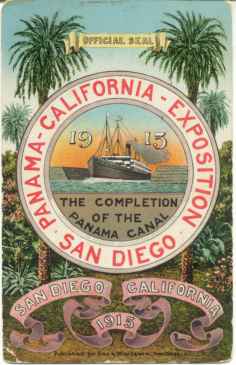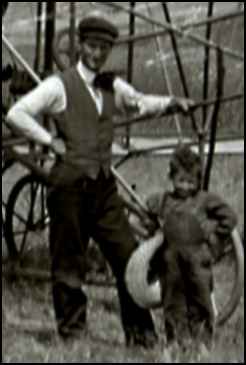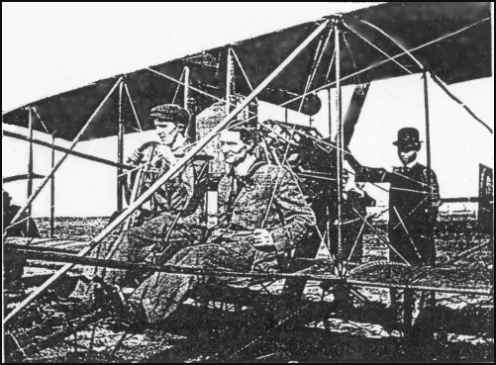
|
SAN DIEGO AEROPLANE MFG. CO. |
 |
For enlarged version, click on: Sketch Collection of Ernie Sansome |
|
Charlie began to sketch his concept of an aeroplane between elevator trips. It was a conceivable
design. By the summer of 1909 he was convinced that the monstrous thing would fly. The backers agreed even though they hadn't the
slightest idea of what they were looking at or what Charlie was talking about. Half the time Charlie didn't know exactly what he was
saying himself. Satisfied it was certainly impressive if nothing else, the project was initiated and the San Diego Aeroplane Mfg. Co. was
incorporated on Sept 14, 1909. Thus the first airplane company in the State of California was formed. Offices were opened in the Keating
Bldg. and the Honorable L.A. Wright became president while Charles Walsh was Vice President, and General Manager. With a few friends, who wre willing to risk being laughed at and called crazy by even their closest friends, Charlie set to work in an abandoned carriage shop at 3rd and F streets. By November, the big monoplane proudly spread its 50 foot wing awaiting only an engine for power. The only source readily available was a 29 hp Cameron automobile engine supplied by a local dealer for advertising purposes. Walsh fitted it into a cradle just behind the pilot's seat where the drive shaft would turn twin propellers through the center section area. This was because all the pictures Charlie could find had the outer portion of the wings trimmed off, so he just tapered them to a flat surface as they reached the tips. The greatest advance in concept was the use of hinged trailing edge ailerons near the outer portion of each wing. The tricycle landing gear, using bicycle wheels, was of the Curtiss concept. It had all the essentials of a flying machine--it lacked only refinement. |
 |
|
"This is a very old card and maybe it's the only one left. C. F. Walsh had this Seal painted on his Plane's rudder. San Diego, Jan or Feb,
1909. The Fair was not till 1915." |
|
The city of San Diego was taking an interest in the Walsh giant and requested their World Exposition
Booster Emblem be prominently displayed on the machine. The city was striving to get the Exposition for 1915. They hosted the
Panama-Pacific Exposition. Charlie plastered the big, blue, and red emblem on the "Queen Mary" rudder. In the meantime Charlie quit his job at the hotel and tried selling real estate while working on the airplane. Early in December the ship was dismantled and hauled to the Coronado Country Club Polo Field for final erection and flight trials. Taxi tests were run and as confidence built, attempts af tull flight were made. Charlie had no success. it was quite clear, he had created a 900 pound monster that couldn't possible fly on 20 hp. It was also found that the aft tail surfaces suspended on flimsy outriggers, wanted to drag on the gorund when the controls were pulled back for takeoff. These things had to be corrected but with Christmas holidays fast approching and family commitments, the big monoplane was staked down on the Polo Field until the new year. On Jan. 1, 1910, a violent wind storm hit the San Diego area. The next day Charlie and his helpers went to Coronado to find the plane blown over on its back. He was sick at heart as he viewed the smashed machine. The first Air Meet in America was scheduled for the Dominguez Ranch, near Los Angeles, between January 10 and 20, and he wanted so desperately to go, and perhaps bring his monoplane. he didn't have the money to repair the plane and to go to the Meet as well. It was vitally necessary to get to Dominguez, he reasoned to see the aeroplanes and study their construction. The repair job would have to come later. He borrowed a few dollars from friends and Alice pawned her wedding ring for $50.00 which enabled him to make the trip. |
 |
| -----Photo courtesy Mrs. Alice C. Martin |
|
Collection of Ernie Sansome |
 |
Collection of Syndee Holt, 5-26-08 |
 |
The child is not identified Collection of Syndee Holt, 5-28-08 |
|
Curtiss was looking for winter quarters somewhere in the warmer climate of Southern California. He made several inquiries during the Dominguez Meet and residents from both Los Angeles and San Diego made inviting offers. The greatest inducement came from the Spreckles Sugar Company, who offered some vacant land they owned in the San Diego area known as the North Island for a token rental fee of $1.00 per year. Curtiss asked his top pilot Charles Hamilton to take his plane and check out the area right after the Dominguez Meet. With this attraction coming to San Diego, the city fathers quickly made plans to have an Air Meet of their own and scheduled it for the weekend of January 23, 1910. Arrangements were made to star Charles Hamilton making demonstration and passenger flights. It will be noted that Glenn Curtiss was flying his famous Rheims Racer at Dominguez and relinguished it to Charles Hamilton at the close of the meet. The demonstrations at San Diego were double barreled, Hamilton and the Curtiss Rheims Racer. The Los Angeles Air Meet sparked a great many west coast men to try their hand at aviation. Charles Walsh was typical, but unlike many others he had the fortitude to make it become a reality. There were others who were experimenting, the Christofferson Brothers, the Eaton Brothers, Glenn Martin, Adolph Sutro, Waldo Waterman, but few broke through the mysteries of powered flight as quickly or dramatically as Charles Walsh. Remember this was January, 1910. Walsh hurried back to San Diego and feverously went to work on his monoplane. They worked day and night, hoping to have it ready for demonstrations before Hamilton and the public during the air meet. The nose wheel was moved to the tail post, the horizontal tail was raised and the booms supporting the forward elevator were shortened to help balance the machine. The engine was raised to the center of gravity area which made the chain drive to the propellers shorter and through sprocket changes turned them at a greater speed. For the most part all this was wishful aerodynamic improvements. |
 |
| -----Photo courtesy Mrs. Alice C. Martin |
|
Walsh was instrumental in getting C. K. Hamilton to take one of the Curtiss planes from the meet to San Diego where the photo above was made on January 23, 1910. Hamilton is the pilot on the left; Walsh, ready for his first instructional flight, is on the right. Collection of Ernie Sansome |
|
Charlie was thrown out but emerged unhurt, sporting his usual grin and carefree nature commented. "I believe I said the whole rosary during those last few seconds." One of the first to arrive after the accident was Hamilton, who wouldnt let his accident buffalo him. He offered to take Walsh for a ride in the Curtiss. This eased the thought of wrecking San Diego's first airplane considerably. Hamilton proceeded to thrill the crowd with flying expertise and scheduled passenger flights for the next day. Guess who was the first one at the Polo Grounds the next morning?...The two Charlies greeted each other with an understanding smile and immediately started talking about flying. The thin, frail Charles Hamilton, already showing signs of his failing health, explained to the wild redhead."You sit here along side me on this seat, put your feet on that bar there on the outrigger strut and hold on to this wire. Don't panic, take a deep breath and watch my movements. I'll explain a few thing as we circle the field." |
|
|